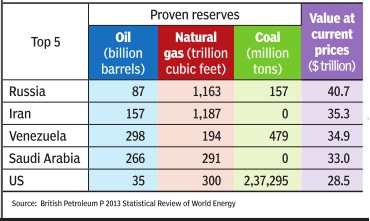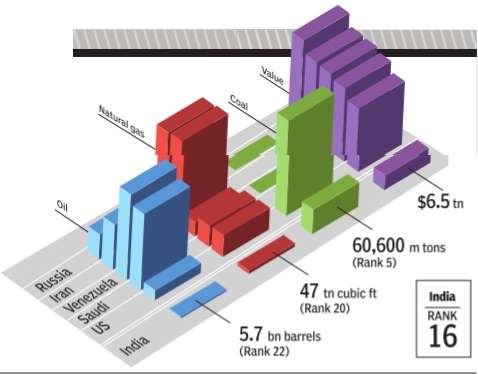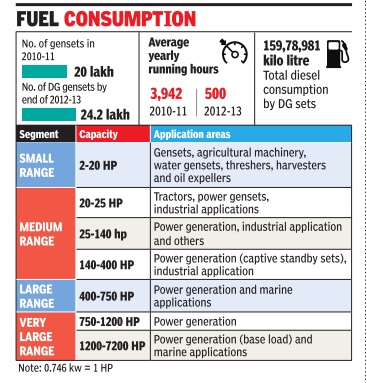Energy: India
| Line 11: | Line 11: | ||
A watt equals a joule per second. If a smart phone uses five joules of energy every second, then the power of the phone is five joules per second, or five watts. | A watt equals a joule per second. If a smart phone uses five joules of energy every second, then the power of the phone is five joules per second, or five watts. | ||
| + | |||
| + | Indpaedia has separate pages on | ||
| + | |||
| + | [[Energy: India ]] and | ||
| + | |||
| + | [[Power: India]] | ||
{| class="wikitable" | {| class="wikitable" | ||
Revision as of 15:26, 8 March 2017

What Is the Difference Between Power and Energy? The Staff of QUEST explains:
The word “energy” is used to describe many different things—how we heat and cool our homes, how we fuel cars. Energy isn’t something that can be seen or felt, but you can see and feel the effects when energy is transferred from one place to another.
Energy is what makes change happen and can be transferred form one object to another. Energy can also be transformed from one form to another.
Power is the rate at which energy is transferred. It is not energy but is often confused with energy. The watt is the most commonly used unit of measure for power. It measures the rate of energy transfer.
A watt equals a joule per second. If a smart phone uses five joules of energy every second, then the power of the phone is five joules per second, or five watts.
Indpaedia has separate pages on
Energy: India and
This article has been sourced from an authoritative, official readers who wish to update or add further details can do so on a ‘Part II’ of this article. |
Contents |
The source of this article
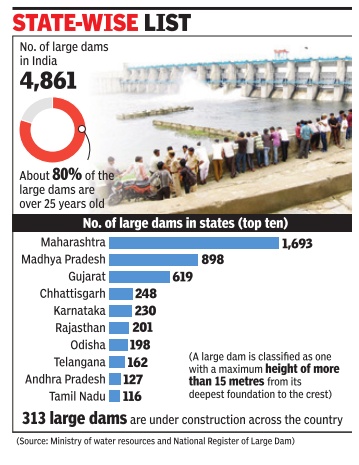
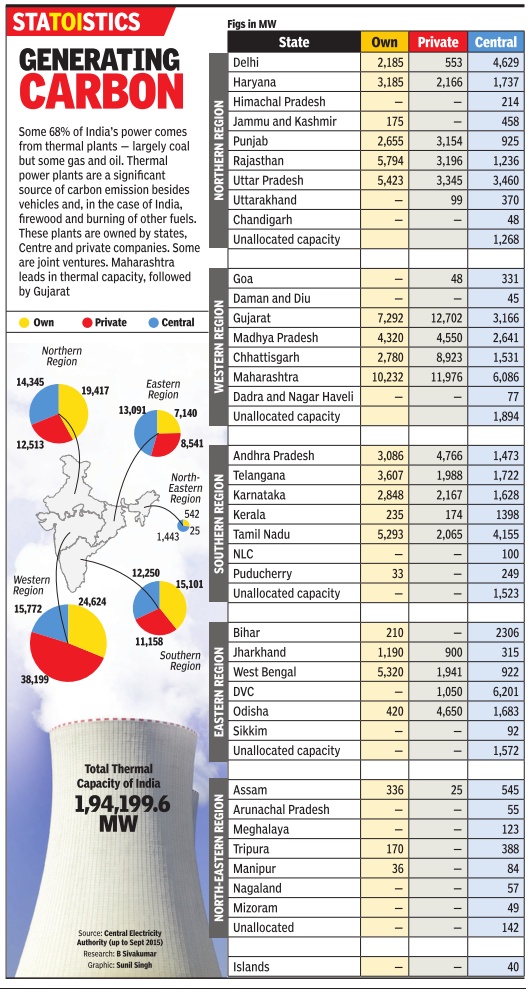
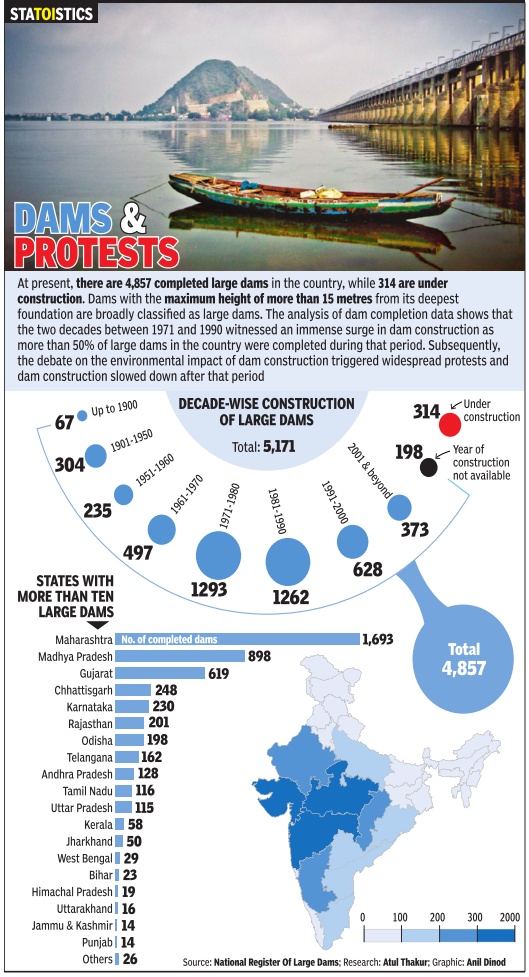
INDIA 2012
A REFERENCE ANNUAL
Compiled by
RESEARCH, REFERENCE AND TRAINING DIVISION
PUBLICATIONS DIVISION
MINISTRY OF INFORMATION AND BROADCASTING
GOVERNMENT OF INDIA
Energy

Why India's giant leap in green energy is still a small step
The Times of India Oct 20 2016 : WHY INDIA'S GIANT LEAP IN GREEN ENERGY IS STILL A SMALL STEP
ENERGY is an essential input for economic development and improving the quality of life. Development of conventional forms of energy for meeting the growing energy needs of society at a reasonable cost is the responsibility of the Government. Development and promotion of non-conventional/alternate/new and renewable sources of energy such as solar, wind and bio-energy, etc., are also getting sustained attention. Nuclear energy development is being geared up to contribute significantly to the overall energy availability in the country.
Energy reserves
December 07 2014
As per December,2014, India is the fourth largest energy consumer in the world, trailing the US, China, and Russia. Currently, India is not able to consistently meet domestic energy demands, which makes securing energy sources one of the top priorities and the largest energy source is coal.
Diesel generators
Jan 02 2015
Sanjay Dutta
Diesel gensets lose power as reforms start paying off
Diesel-fired gensets appear to be losing power as the mainstay of energy for commercial establishments and other large consumers as the Centre's thrust on raising generation capacity and other reforms in the last few years begin to pay off by way of improved supply from the mains. The average running period for DG sets of all sizes has dropped to 500 hours in a year from 3,942 hours in 201011, a power ministry note says, quoting two separate reports prepared by Petroleum Conservation and Research Association and Bureau of Energy Efficiency .
In terms of average perday operation, gensets are being run for an average 1.37 hours against an average 10.8 hours operated some twothree years back.
This by no means is an end of the road for diesel gensets, which have recorded a growth of roughly 10% in annual sales. “Even though the number of DG sets have grown over the last two years... Basically, the DG sets are being used (installed) as stand-by source of supply ,“ says the note.
The note, thus, gives an in dication of shape of things to come against the backdrop of the Modi government taking steps to ensure 24X7 power supply in the next two-three years.
There are an estimated 24 lakh diesel gensets operating across the country , up from 20 lakh pegged around 2010-11.The report reckons the aggregate capacity of gensets of all sizes operating in the country by the end of 2012-13 to be 105,512 mw. This is roughly 20 times more than Delhi's daily demand for power. Gensets are known as a major contributor to pollution and a fall in their running hours has a positive bearing on the environment.
Taxing energy use, India and the world: 2015
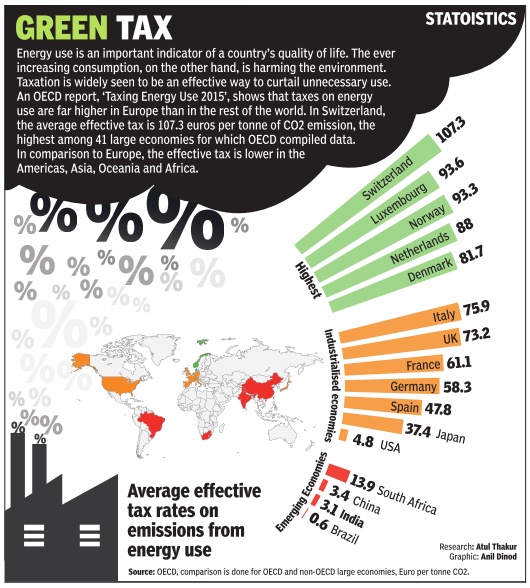
Domestic power consumption in India
STATE OF POWER
The Times of India Sep 22 2014
Domestic power consumption in various states is not uniform and depends on their economic growth. The uneven electrification of households in the country is also responsible for this
Energy consumption
Energy conservation
LED bulbs
2016: Ujala makes India world leader
The Times of India, Apr 21 2016

India headed for top slot in global LED light market
Sanjay Dutta India is poised to emerge as the largest market for lighting systems based on LEDs (light-emitting diodes), thanks to the Narendra Modiled government's UJALA (Unnat Jyoti by Affordable LEDs for All) scheme for replacing all inefficient bulbs with these energy-efficient lamps. “With India selling 770 million LED bulbs every day , the country will soon become the LED capital of the world. Prices of LED bulbs have come down to 55 pence (Rs 52) from over 3.5 pounds (Rs 332) two years ago,“ a government statement quoted power minister Piyush Goyal as telling investors in London on Wednesday . Today , 12% of all LED lighting systems sold in the world is consumed in India, according to Saurabh Kumar, managing director of Energy Efficiency Services. The company , promoted by state-run power utilities, is the nodal agency for implementing the UJALA scheme.
UJALA has brought down the price of an LED bulb to Rs 85 for a 9-watt on an average.
